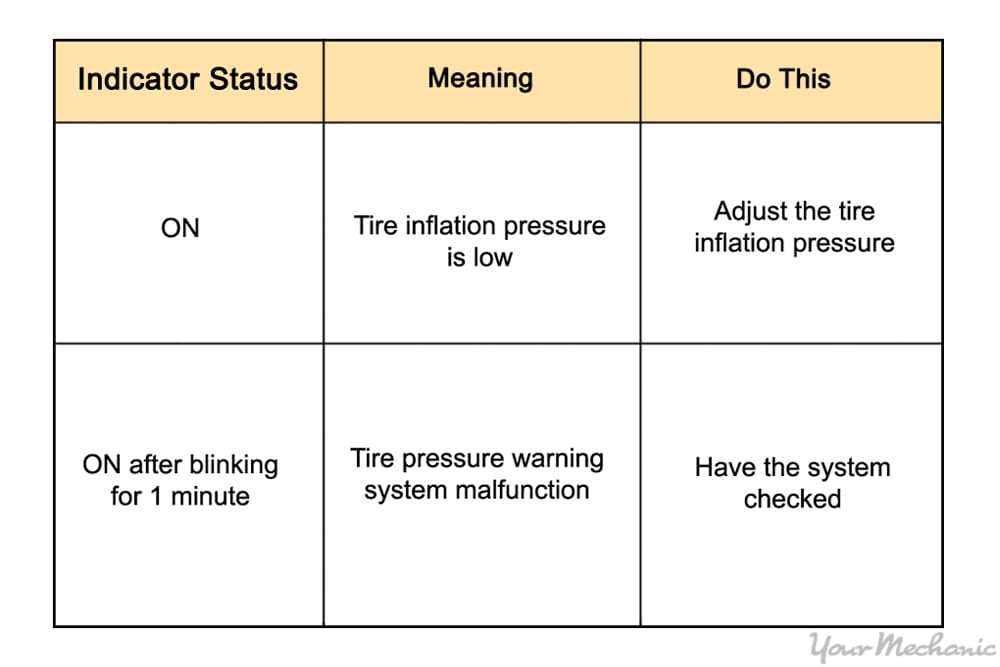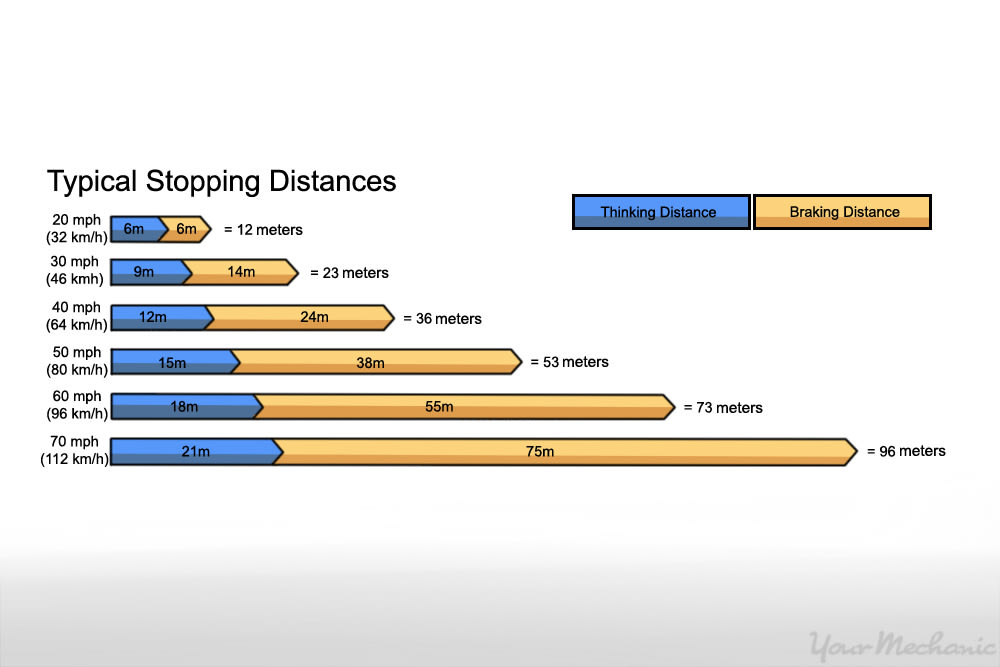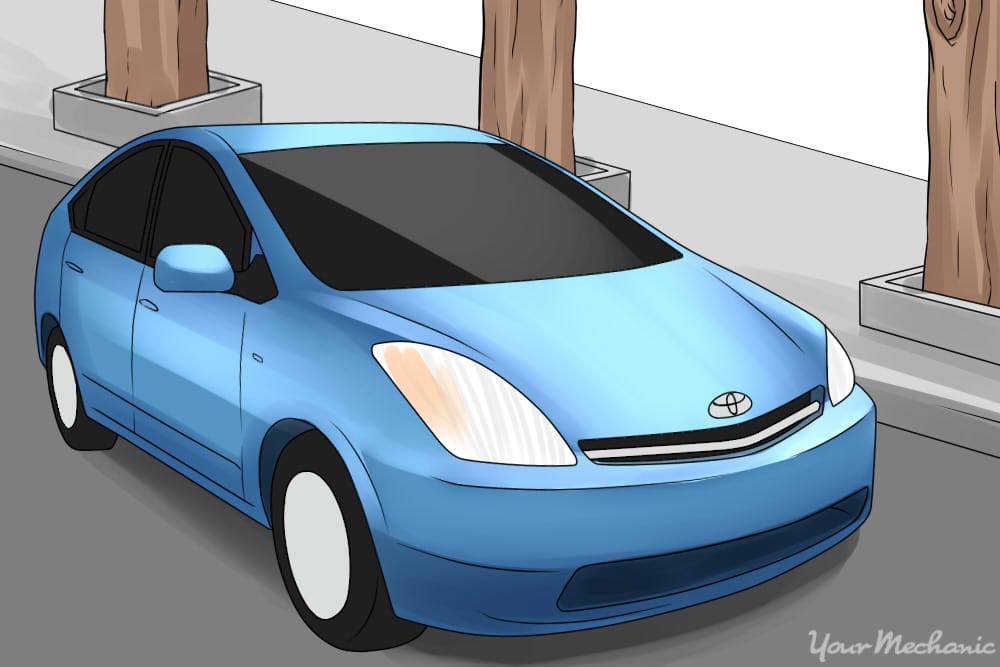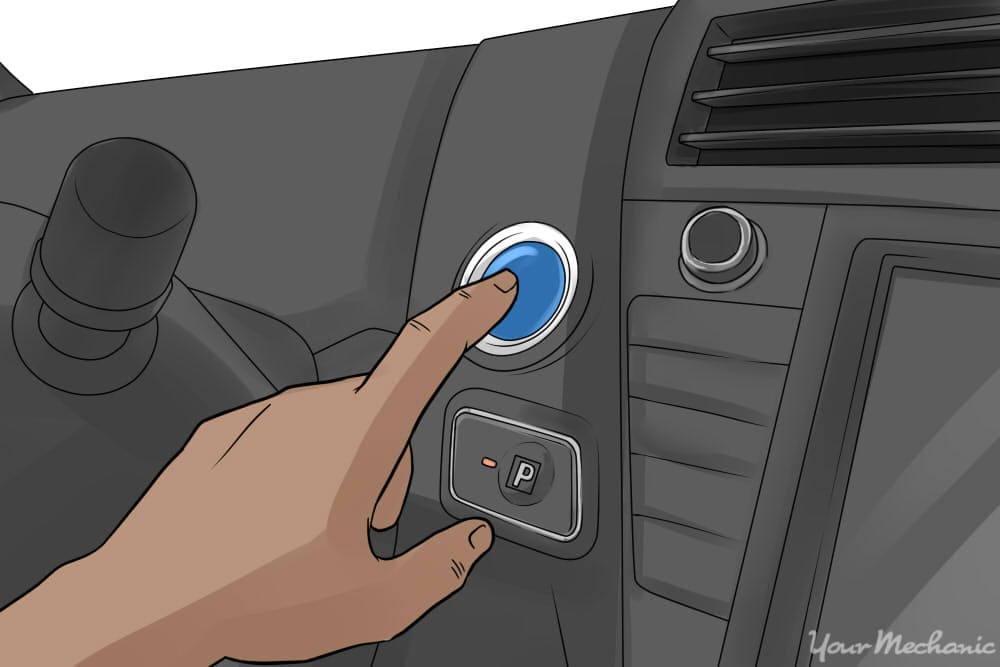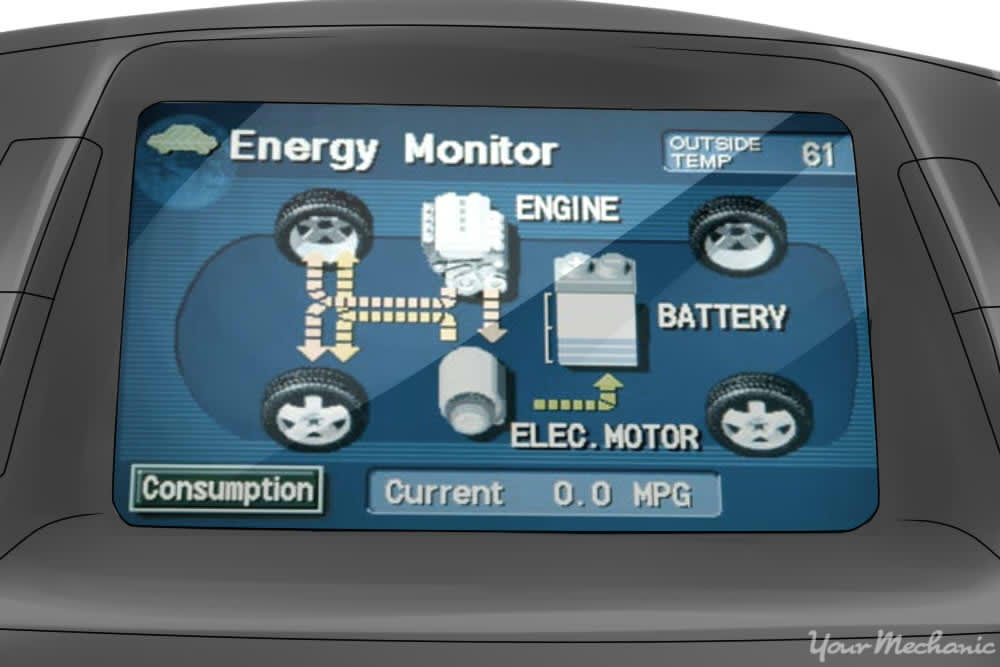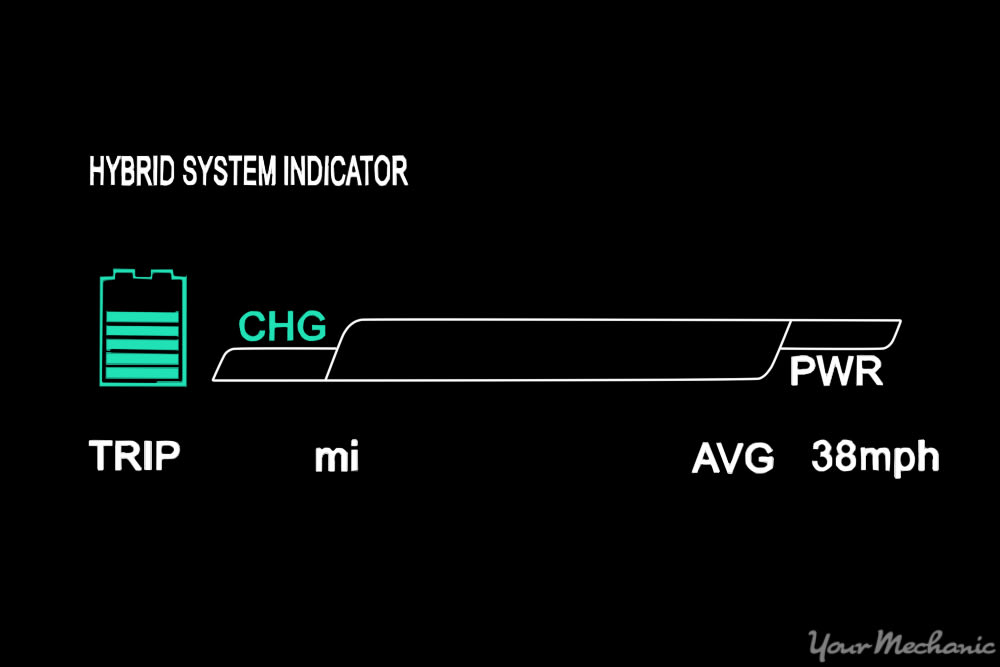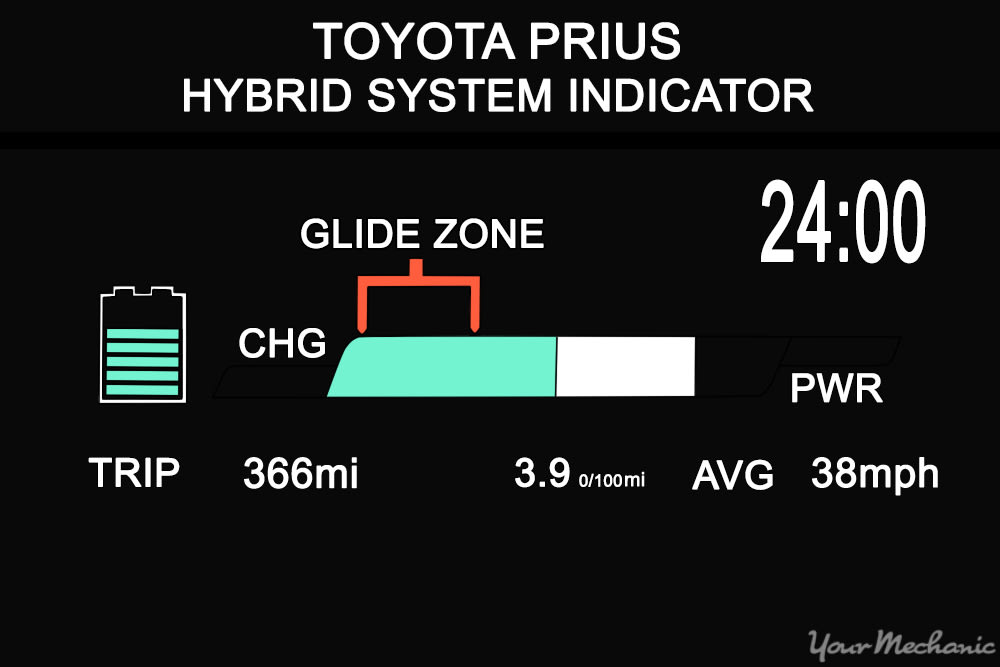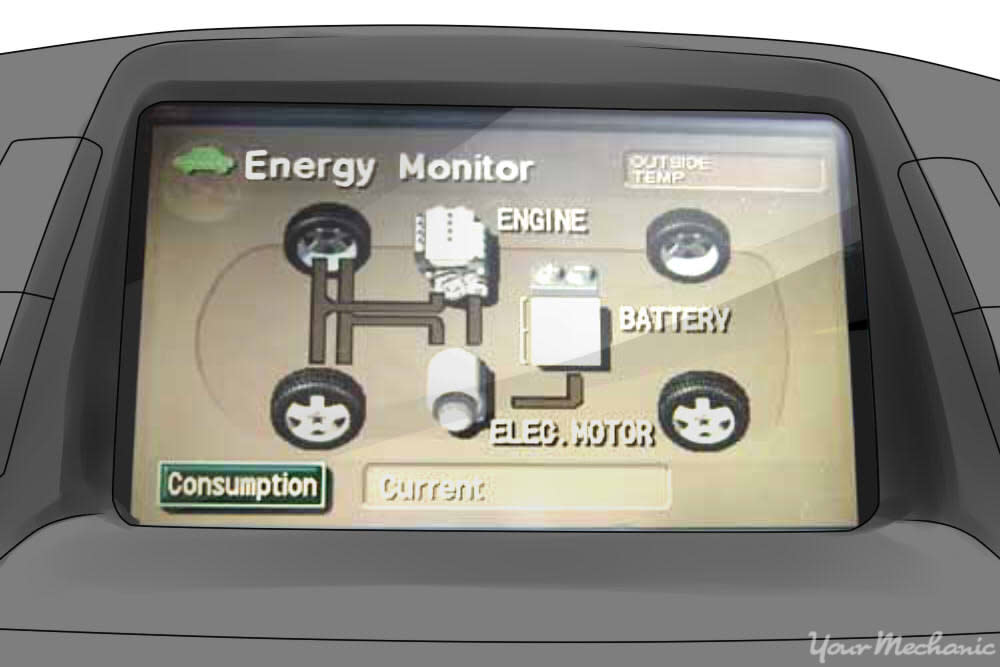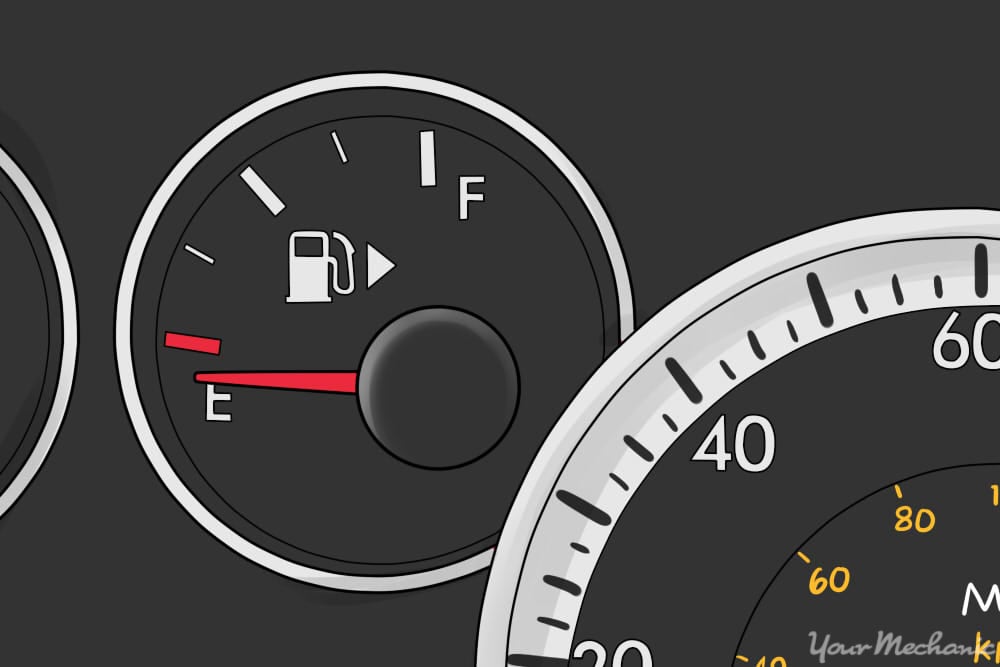

The Toyota Prius is considered one of the cleanest, environmentally friendly vehicles to drive based on the amount of smog-forming emissions that most other vehicles put out. The Prius is a full hybrid electric vehicle that combines the use of an internal combustion engine with an electric propulsion system. The end result is that the Prius uses less gas per mile than many of the other vehicles on the market.
The Toyota Prius is designed for exceptional gas mileage with its hybrid technology and aerodynamic design. However, drivers can impact just how much mileage they can get on a gallon of gas, and you’ll see variations from 40 to 50 MPG. Here are some strategies you can employ to improve your gas mileage.
Method 1 of 9: Choose the best route
The route you select to your destination will play a key factor in your overall mileage.
Step 1: Pick a path with few stops. Select a long stretch of highway with few stops.
Step 2: Choose a route with optimal speed. Whenever possible choose a route which allows you to go between 40-45 mph.
Step 3: Avoid windy areas. Choose a route with less wind, especially crosswind.
- Tip: You may need to try out different routes to see which one gives you the best results.
Method 2 of 9: Learn when to drive
It takes about five to ten minutes of driving for a Prius to improve mileage. Cold starts on hybrids cause lower mileage during that time.
Step 1: Avoid the rush-hour. Avoid rush-hour traffic whenever you can.
Step 2: Avoid bad weather. Avoid driving in the rain or snow.
Step 3: Take advantage of warm weather. Drive during the heat of the day to enhance gas mileage and take care of all your errands in one trip.
Method 3 of 9: Maintain your Prius
Taking care of your Prius will ensure it runs efficiently.
Step 1: Maintain your tires. Check tire pressure and inflate tires when they run low. At the same time, don’t over-inflate your tires.
Step 2: Use the right fuel. Use the recommended type of fuel for your Prius. For the 2014 and 2015 models use an 87 octane gas or higher.
Step 3: Maintain your car. Follow the recommended maintenance schedule in your owner’s guide to ensure your car continues optimal operation.
Method 4 of 9: Develop good driving habits
How you drive impacts your car’s performance. Develop good driving habits to improve your mileage.
Step 1: Maintain your distance bubble. Maintain a proper distance from other vehicles, especially when slowing down. This allows your car to coast or glide to a stop. Increase this distance in poor road conditions.
Step 2: Obey the speed limit. Don’t drive over the speed limit because it increases the fuel consumed.
Step 3: Don't shut off your car when you wait. Put your car in Park when you have to stop for only a few minutes rather than shutting it off and starting up again, which uses extra fuel.
Step 4: Avoid using the AC. Avoid using the air conditioner or defrost whenever you can because this also increases fuel usage.
- Tip: Try to never use the MAX setting on your AC, which takes even more fuel to cool out your car.
Step 5: Don't cruise over hills. Use cruise control only on flat roads with few hills. Shut it off when driving on steep hills, which can cause the engine to work harder.
Method 5 of 9: Use Glide mode
- Tip: Make sure to warm your Prius up before attempting to go into any of the described modes below. Also, keep in mind that if you are attempting to enter Glide mode for the first time on a given day, the Prius has to attain a speed of 35 MPH or greater before it will enter the mode.
The display screen in the center of your dashboard will also tell you that your Prius is running.
You can coast in a Toyota Prius in order to save gas while at the same time charging your vehicle's hybrid battery. You can also enter Glide mode, which uses neither gas nor electricity to power the vehicle. This requires knowing how to read and use the Energy Optimization screen to your advantage. Successfully getting your Prius into Glide mode depends a lot on how much you push the accelerator. That is why it is imperative that you learn how to use the Energy Optimization system in order to take full advantage of the Glide feature.
Step 1: Put the fob into the ignition. After sitting down in the driver’s seat, place the key fob into the ignition hole located next to the steering wheel.
The side of the fob with buttons on it should be facing toward the roof of the car. You do not need to turn the key in the ignition like you do in a normal gas vehicle.
Step 2: Press the brake pedal down. Use your foot to decompress the brake pedal all the way down.
- Note: You cannot start a Prius without having your foot on the brake.
Step 3: Push the “Power” button. Push down the “Power” button on the dashboard. The Prius will start up immediately.
- Warning: Always make sure to watch the road ahead of you. You need to remain aware of any approaching slow-moving vehicles or obstructions in the roadway in order to slow down or avoid them altogether.
Step 4: Get up to the right speed. Start your Prius and get it up to at least 40 MPH.
At speeds under 42 MPH, the gas engine turns off completely. Anything over 42 MPH and the engine continues to stay on.
Step 5: Take your foot off the accelerator. Once your Prius is warmed up and you have it going at a speed of 40 MPH, lift your foot off of the accelerator.
All of the arrows on the Energy Optimization system display on the dashboard should show the power flow going from the tires to the hybrid battery. This indicates that your Prius is in regenerative braking mode or that the car's brakes are helping to recharge the battery. You should also feel the Prius start to slow down at this point.
Step 6: Press the accelerator. In order to keep the car moving forward instead of slowing down, press the accelerator slightly at this point.
- Tip: If you press too hard on the gas pedal, the arrows will not disappear and you will begin accelerating again because you’ve engaged the engine.
All of the arrows should now disappear, which means you are in Glide mode.
- Note: If you see arrows pointing from the hybrid battery to the tires, then you have entered electric vehicle mode, or EV mode. While useful, EV mode is not the same as Glide mode.
Step 7: Glide until you reach 30 mph. Allow your Prius to glide until you’ve slowed down to about 30 miles per hour or less.
You should not accelerate while gliding until you’re finished. The car should coast on its own, not using any energy or gas.
Tip: You can glide anywhere there is enough open road for you to use. Gliding downhill or on flat roads is perfectly legal in a Prius.
Tip: Gliding in a Prius can add up to anywhere from 60 miles per gallon to 90 miles per gallon, depending on how effectively and often you glide.
Step 8: Accelerate like usual. When you’re done gliding, accelerate like normal back to your optimal speed and begin gliding again if you have the space to do it.
- Tip: Make sure you do not have traffic right behind you when gliding because your Prius will slow down as it glides. Always drive safely even when gliding.
Although Prius’ are already incredibly efficient vehicles, the built-in glide technique allows Prius drivers to save even more gas. With practice, you can use the glide technique while driving on a daily basis and save you an incredible amount of money on gas while taking advantage of one of the many features of a Prius.
- Tip: Different Prius years will have displays that look different. So, make sure that you familiarize yourself with the Energy Optimization system display before attempting to use Glide mode in your Prius.
Method 6 of 9: Use Super Highway mode
Useful at higher speeds in the Prius is the Super Highway mode. In this mode, the internal combustion engine and the battery switch back and forth when providing power for your vehicle. This mode mainly comes into use while driving on flat surfaces or going downhill. It is important in this mode that you understand fully how to use the Energy Optimization system and what the various icons and arrows that appear on the display screen mean.
Step 1: Get up to the right speed. Start the Prius and get it up to the speed you desire. Most often this should be at least 55 MPH or higher. Going below 42 MPH can cause the vehicle to go into Glide mode, which is another system entirely.
Step 2: Let up on the accelerator. Once you are going your desired speed, let up considerably on the accelerator to enter Super Highway mode.
The Hybrid System Indicator on your Prius should show you how many Miles Per Gallon (MPG) you are getting at your current speed.
- Note: When in Super Highway mode, make sure not to slow down too much, though, as you will end up using more fuel to get back up to speed.
Method 7 of 9: Warp Stealth mode
Like Glide mode, Warp Stealth mode allows you to cut fuel consumption, but at a higher rate of speed. In this mode, the Prius must be at a speed above 42 MPH. Unlike Glide mode, where the engine stops spinning completely, the engine of the Prius in Warp Stealth mode turns slightly, though it uses a low amount of energy from the battery while doing so. In addition, in Warp Stealth mode, fuel to the injectors is stopped completely. Warp Stealth mode mainly comes into play when driving on slight downgrades.
Step 1: Get up to the right speed. Start your Prius and get it up to a speed over 42 MPH. If you are going below 42 MPH, you cannot use Warp Stealth mode and will enter Glide mode instead.
Step 2: Take your foot off the accelerator. Next, lift your foot off of the accelerator pedal. This, in turn, makes the regenerative braking system kick in.
Step 3: Apply pressure to the accelerator. Finally, apply a slight pressure to the accelerator pedal to enter Warp Stealth mode.
Tip: The best way to know if you are in Warp Stealth mode is to look for arrows coming from the hybrid battery to the tires on the Energy Optimization system display.
Warning: Keep a watchful eye on your speed. Dropping below 42 MPH will put you into Glide mode, causing the engine to cut out.
Method 8 of 9: Learn the different options for braking and when to use them
Option 1: Glide. Gliding is considered to be the best option for most situations. You take your foot off the accelerator and slightly press down again until the arrows disappear on the screen. See Method 5 above.
Option 2: Coast. Coasting is another option. You just take your foot off the accelerator and don’t put it back on the accelerator or on the brake. See Method 6 above.
Option 3: Regenerative brake. Regenerative braking is the third option. With this technique, you press gently on the brakes to allow the electric motor to slow the car down.
Option 4: Mechanical brake. Another option is mechanical braking, which occurs when you press down firmly on the brakes for an immediate stop.
Method 9 of 9: Learn how to accelerate correctly
Step 1: Slow acceleration. Accelerate slowly when starting to move your car from a complete stop.
Step 2: Accelerate gently. Slightly lift your foot off the accelerator when you are driving over 20 mph. Press down on the accelerator gently. This allows you to send energy to the battery and the wheels at the same time.
Step 3: Firm acceleration. When you’re accelerating on an on-ramp to a highway, you must press down firmly.
- The Prius features an Energy Monitor, which you can use to tell when you’re driving efficiently.
The Energy Monitor display offers insight into how power is moving around in the car, such as the state of the battery charge, the power used during acceleration, and the power that’s used to push the car. You can read more details about the Energy Monitor here.
Driving a Toyota Prius isn’t too difficult but it does require a bit of practice. Knowing how to use the various modes of the Toyota Prius' Energy Optimization system can increase your vehicle's overall fuel economy. If you encounter problems with your system or vehicle, seek the advice of an expert mechanic and have the mechanic fix the problem if necessary.


